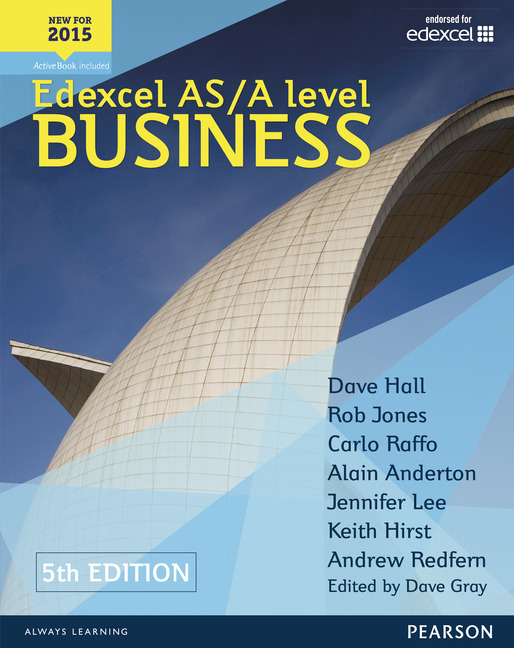| |
Case Study |
Theme 1 |
Theme 2 |
Theme 3 |
Theme 4 |
| 1 |
Nestle |
1.2.1 Demand
1.3.5 Marketing strategies |
2.3.1 Profit
2.5.1 Economic influences |
3.4.3 Shareholders versus stakeholders |
|
| 2 |
Transatlantic Travel |
1.1.1 How competition affects the market
1.1.2 Market positioning
1.3.2 Ways to build a brand
|
2.5.1 Exchange rates |
|
|
| 3 |
Heinz |
1.1.1 Market share
|
2.3.1 Ways to improve profitability
|
3.1.4 Impact of external influences |
|
| 4 |
Instagram
|
1.3.2 Branding and promotion |
2.5.2 Legislation |
3.4.4 Business ethics |
|
| 5 |
Primark |
|
|
|
4.3.1 Marketing
4.3.3 Cultural factors
4.4.2 Ethics |
| 6 |
Next |
1.4.1 Approaches to staffing |
2.3.2 Business failure
2.4.3 Stock control |
3.2.2 Mergers and takeovers |
|
| 7 |
Amazon |
1.4.2 Recruitment, selection and training |
2.2.1 Sales forecasting
2.3.1 Profit
2.4.1 Production, productivity and efficiency |
|
|
| 8 |
Chicken |
1.2.2 Factors that lead to a change in supply
1.2.3 Markets
|
2.2.3 Break even |
3.1.4 Impact of external influences |
4.1.2 International trade and business growth |
| 9 |
Honda |
1.1.1 The market
1.3.3 Pricing strategies
|
|
|
4.2.4 Reasons for global mergers and Joint ventures |
| 10 |
Renault |
1.1.3 Market positioning
1.3 Marketing mix and strategy |
2.3.1 Profit
2.5.1 Economic influences |
|
|
| 11 |
AnMouf |
1.2.1 Demand
1.2.3 Markets
|
|
3.1.4 Impact of external influences |
|
| 12 |
Asda
|
1.3.4 Distribution
1.4.1 Approaches to staffing
1.4.2 Recruitment, selection and training
1.4.3 Organisational design |
|
|
|
| 13 |
Amazon Warehouses |
1.4.1 Approaches to staffing
1.4.3 Organisational design
|
|
|
4.4.1 Impact of MNCs on the local economy |
| 14 |
Twitter |
1.4.1 Approaches to staffing
1.4.4 Motivation in theory and practice |
2.5.2 Employee legislation |
|
|
| 15 |
Doc Martens |
|
2.3.1 Profit
2.5.1 Economic influences |
|
4.3.1 Marketing
4.2.3 Assessment of a country as a production location |
| 16 |
Halfords |
1.3.5 Marketing strategy |
2.5.1 Economic influences |
3.1.4 Impact of external influences |
4.1.5 Trading blocs
4.2.5 Global competitiveness |
| 17 |
Women entrepreneurs |
1.5.2 Entrepreneurial motives and characteristics
1.5.6 Moving from entrepreneur to leader |
|
|
|
| 18 |
Food shortages |
1.2.2 Supply
1.2.3 Markets
|
|
|
4.1.5 Trading blocs |
| 19 |
Online to Offline shopping |
1.3.4 Distribution
1.3.5 Marketing strategy |
2.5.3 The competitive environment |
3.1.2 Theories of corporate strategy
3.2.2 Mergers and takeovers |
|
| 20 |
BrewDog |
1.4.1 Approaches to staffing
|
|
3.1.2 Theories of corporate strategy
|
4.2.1 Conditions that prompt trade
4.2.4 Reasons for global mergers or joint ventures
4.3.3 Cultural/social factors |
| 21 |
Nestle |
1.3.1 Product/service design |
2.5.1 Economic influences
2.5.3 The competitive environment |
3.1.2 Theories of corporate strategy
3.4.3 Shareholders verses stakeholders |
|
| 22 |
Prime |
|
2.2.1 Sales forecasting
2.5.2 Legislation |
3.1.4 Impact of external influences
3.2.1 Growth |
|
| 23 |
Tik Tok |
1.4.1 Approaches to staffing
1.4.4 Motivation in theory and practice |
|
|
|
| 24 |
Twitter |
|
2.1.4 Planning
2.2.2 Sales, revenue, and costs
2.3.2 Liquidity |
|
|
| 25 |
Meta |
1.4.1 Approaches to staffing |
2.4.1 Production, productivity and efficiency
2.5.2 Legislation
|
|
|
| 26 |
Fast Fashion |
1.3.1 Product/service design
|
|
|
4.4.2 Ethics
4.2.1 Conditions that prompt trade |
| 27 |
Premier Inn |
1.4.4 Motivation in theory and practice
1.5.5 Business choices |
2.3.1 Profit
2.4.2 Capacity utilisation |
3.1.4 Impact of external influences |
4.4.2 Ethics |
| 28 |
Kirin |
|
|
3.1.2 Theories of corporate strategy
3.2.2 Mergers and takeovers |
4.2.2 Assessment of a country as a market
|





